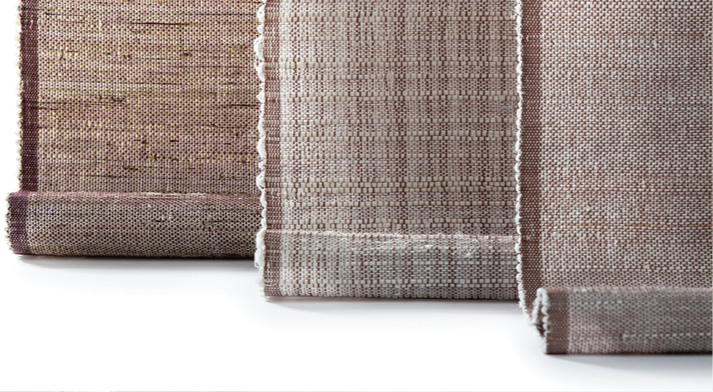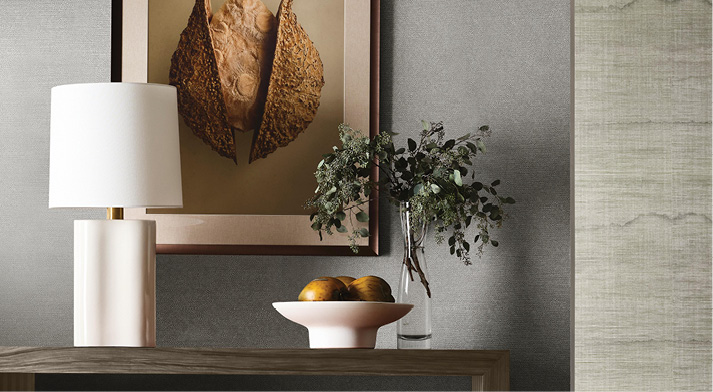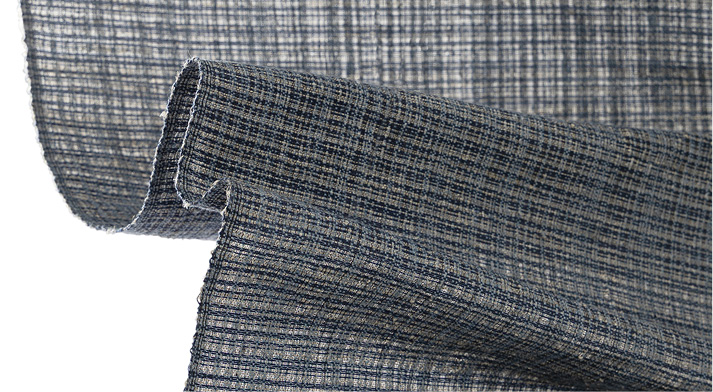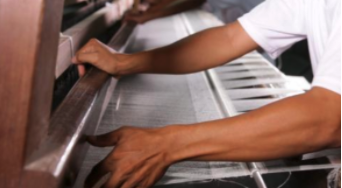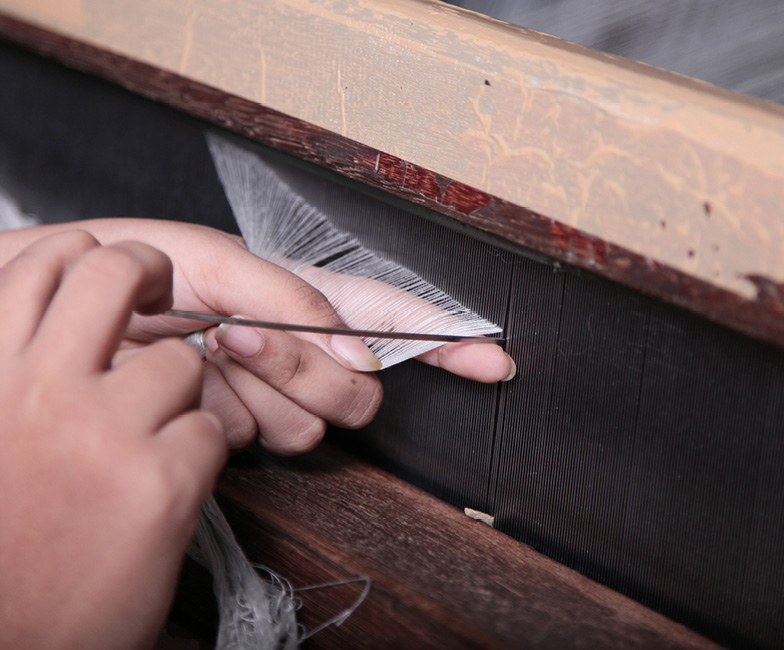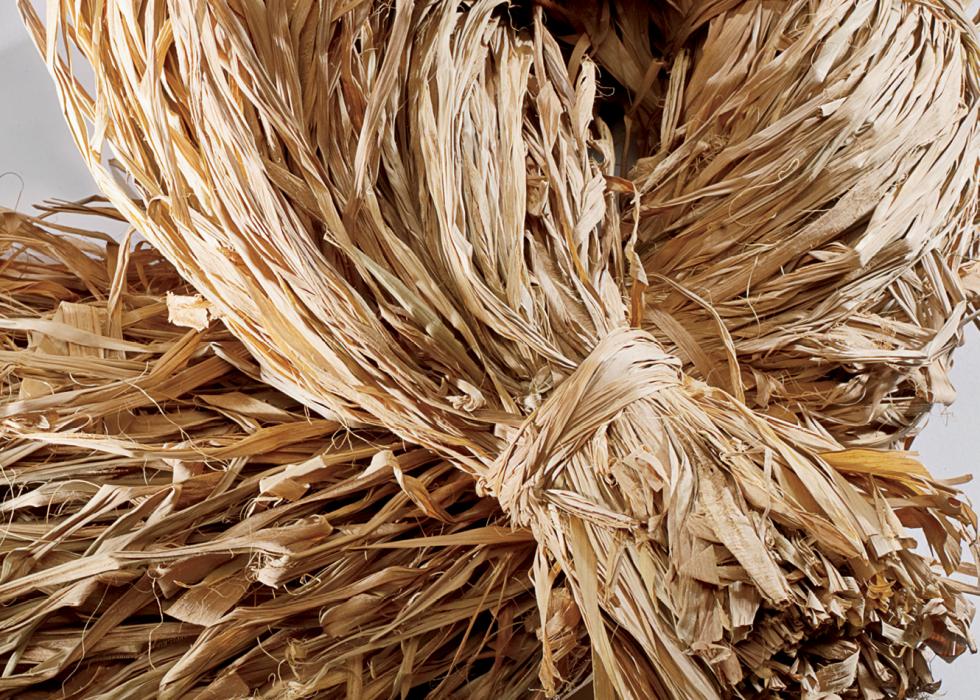A soft fiber from the leaf stalk of the banana plant that can be stripped into very fine strands. Commonly known as banana hemp.
This fiber comes from the inside of the Arrow tree vine. It is grown and harvested seasonally and very limited in its supply. This light and airy fiber has a glossy and smooth finish.
A tropical grass with hollow woody stems; mature canes can be used for manufacturing furniture and windowcoverings. The peel and husks can be used raw, and the inner peel can be spun into a thread to make a textile. LEARN MORE
Bamboo husk or shoot skin is a leaf that covers the joints of the bamboo tree. Once separated from the bamboo, the husk is split into finer strips, which are then knotted to create a strong filament for weaving. LEARN MORE
A thick, soft fiber that is cultivated from a banana tree trunk. Coloration varies greatly depending on the climate in which it is grown and how it is dried. LEARN MORE
Cork is harvested from the inner layer of bark tissue, primarily from the Cork Oak. Because only the cork is harvested, the tree remains healthy. Cork production is considered environmentally friendly and sustainable. LEARN MORE
The soft fiber of cotton produces a thread that weaves into a strong, breathable textile.
One of the world’s oldest and most versatile fibers, hemp fibers have a vast range of uses including being twisted into ropes and spun into textiles.
Jute is a long, soft, shiny vegetable fiber that can be spun into strong thread or woven in its natural leafy state.
A grassy fiber that can be used in its raw state, but is more often refined to make linen. Characterized by its crisp and textured feel, linen is a versatile textile that has a high natural luster. LEARN MORE
Mendong, a water grass abundantly found in Southern Asia, serves as a sustainable and versatile material. It grows naturally without the need for irrigation or fertilizers, making it a quickly renewable resource harvested by hand by local villagers.
Mica sand is comprised of muscovite, a mineral that is easily broken down into a fine sand, which takes on reflective properties with a soft, glittering appearance.
A durable fiber, obtained from the bones of palm leaves, that easily takes on color hues when cured.
A tropical plant that has similar characteristics to stiff grass. It is commonly reserved for Southeast Asian cuisine.
An ultra thin material made from wood fibers that have been mechanically separated and stretched when wet. Pulp fiber materials are often twisted prior to weaving to add strength.
Raffia fiber is widely used throughout the world. It is produced from the membrane on the underside of each individual frond leaf. The membrane is taken off to create a long thin fiber, which can be dyed and woven as a textile.
Native to Asia, the fibers from the stem of the ramie plant are strong enough to be stripped into refined strands while maintaining a soft, textured nature. LEARN MORE
Made from recycled denim blended with post-consumer PET, this yarn offers a soft, subtly slubbed texture in true denim tones. Its naturally retained color reduces water and energy use while diverting textile and plastic waste from landfills. LEARN MORE
A hollow grass-like plant that grows abundantly in tropical wetlands such as marshes or paddies. When dried, river reeds take on woody characteristics.
An aquatic, flowering plant native to southern Asia, whose milky-white, spongy stem interior resembles the look and feel of cork. LEARN MORE
A grass that grows in a salt water environment. It is cultivated in flooded paddy fields. When dried, these grasses become very stiff.
A stiff fiber from the agave plant. Durability of the fibers increases when they are dried and interwoven.
A curly fiber from the root of the vetiver plant that becomes stiff when dried. Its strong earthy fragrance is commonly used in perfumes or colognes.
A grassy fiber indigenous to the South Pacific. When dried, its variegated natures makes it easily distinguishable.
Water Hyacinth grows rapidly in all types of freshwater environments and is considered an invasive species with adverse effects if allowed to grow uncontrolled. Harvesting the plants from waterways, then drying and splitting the hollow stalks, creates a unique natural fiber for weaving and supports healthy waterways.
The long stalks or stems of water lilies provide a soft, yet strong fiber. Only stems from mature plants are selected for their superior strength and uniformity. Fibers are then sun-dried and handspun.
Spun from the fleece of sheep, wool is a hardy natural fiber that has superior drapability and excellent insulative properties.
